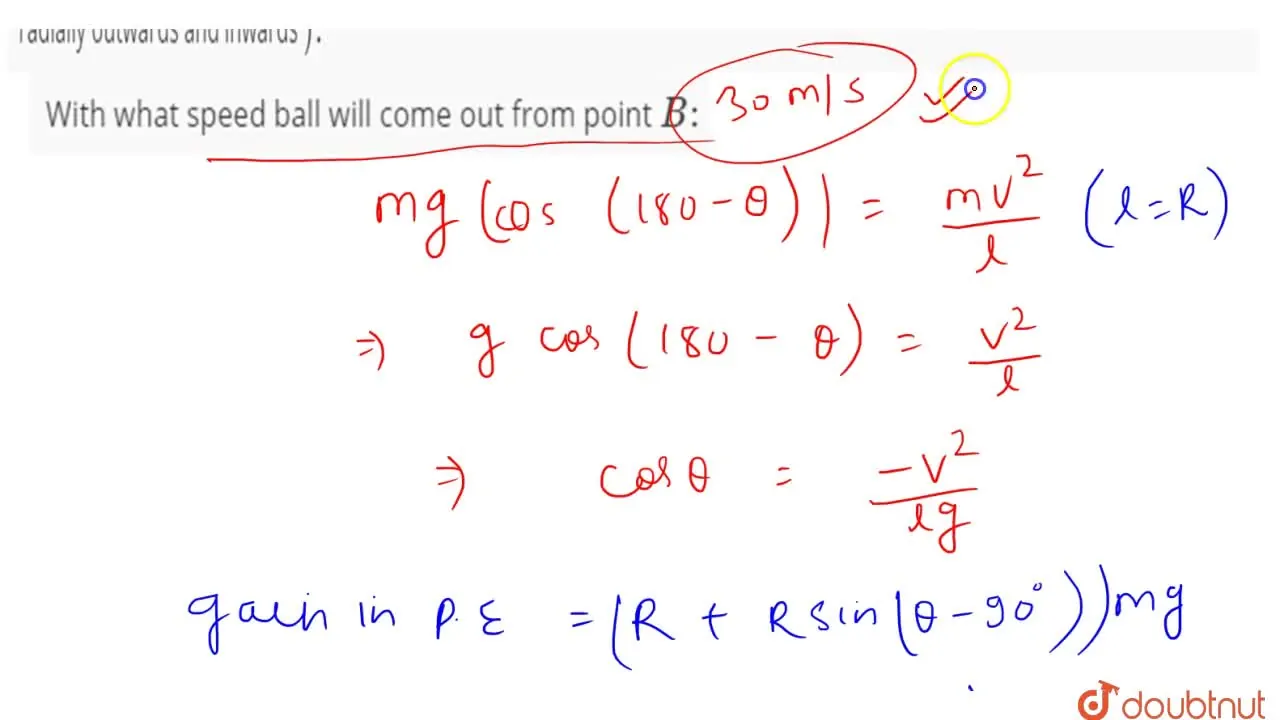A smooth horizontal fixed pipe is bent in the form of a vertical circle of radius 20m as shown in figure. A small glass ball is shown in horizontal portion of pipe at speed 30m/s as shown from end A. ( Take g=10m/s2)
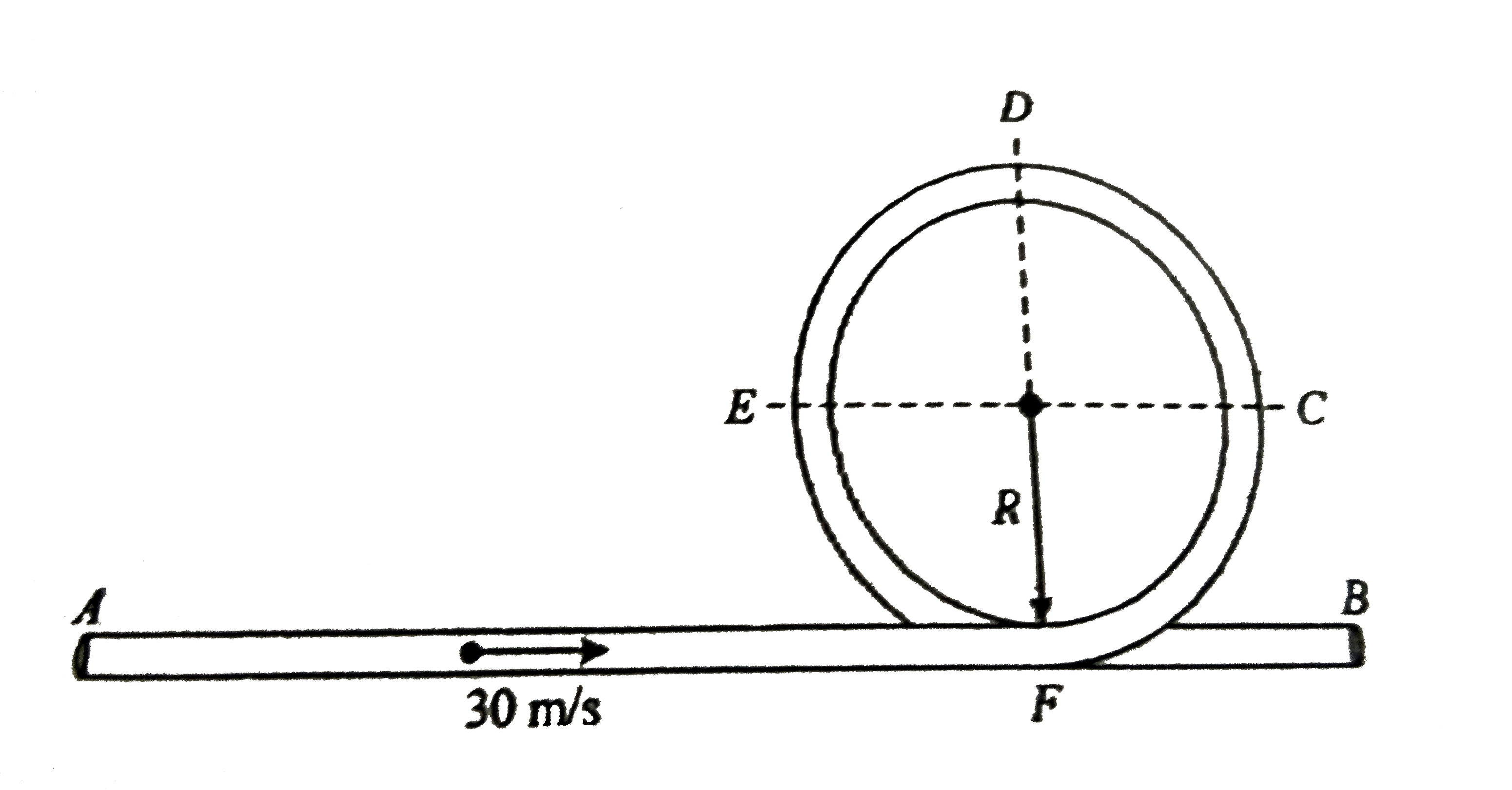
At which angle from vertical from bottom most point F. The normal reaction on ball due to pipe will change its direction ( in terms of radially outwards and inwards ):
θ=180∘
θ=cos−1(−23)
θ=cos−1(−56)
None of these
The correct Answer is:C
In the given situation if the speed becomes zero at the highest point then also the particle can complete the circle as there is no chance for the particle to loose constact in this case.
umin= minimum speed required to complete vertical circle
=√4gR=√4×10×20=√800m/s
30m/s>√800
so it can easily complete the vertical circel
Now, for point C
kf+pf=pi+ki
12mv2c+mghc=0+12m(30)2
v2c=(30)2−2ghc
As hc=hE=R, heights of points C&E from reference so VE=VC
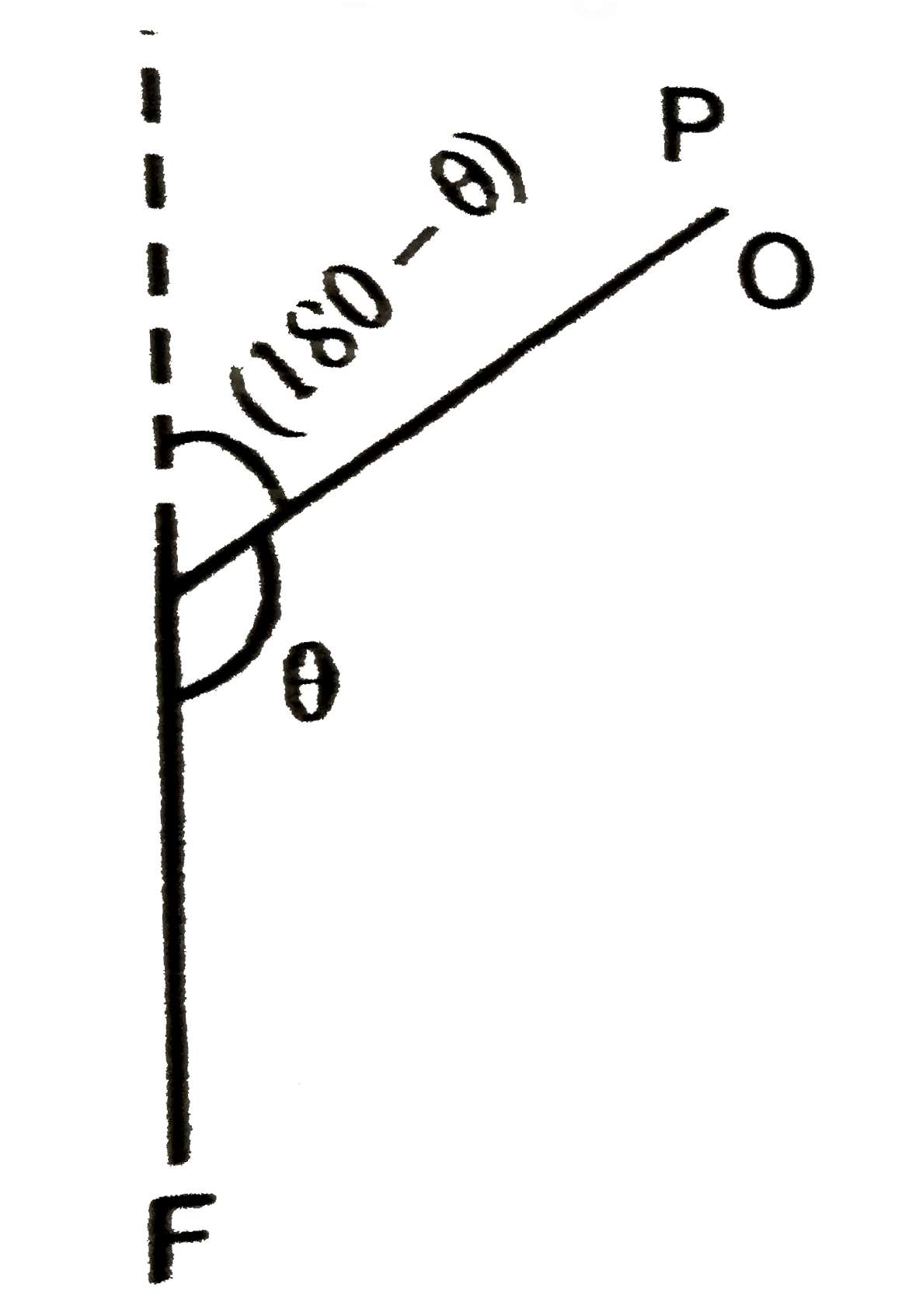
mgcos(180−θ)=mv2l....(1)
Applying W−E theoroen between points F&P:
12mu2=.12mv2+mgl(1−cosθ)
v2=u2−2gl(1−cosθ)......(2)
on putting the value of v2 from (2) in (1)
mgcos(180−θ)=ml(u2−2gl(1−cosθ)]
−glcosθ=u2−2gl+2glcosθ
−3glcosθ=900−2×10×20
cosθ−5003gl=−500600
cosθ=−5/6
Similar Questions
A smooth horizontal fixed pipe is bent in the form of a vertical circle of radius 20m as shown in figure. A small glass ball is shown in horizontal portion of pipe at speed 30m/s as shown from end A. ( Take g=10m/s2)
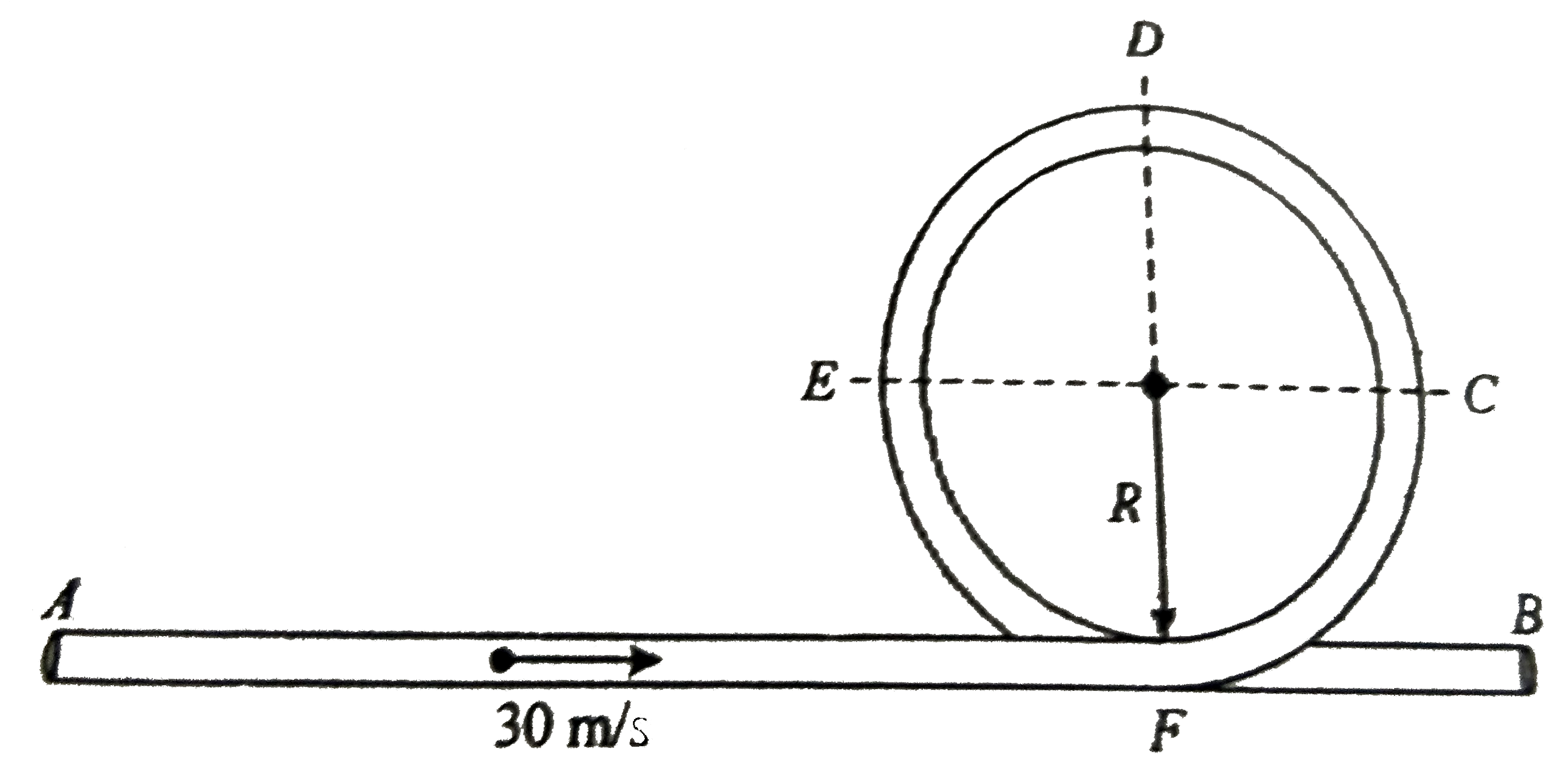
With what speed ball willcome out from point B:View SolutionA smooth horizontal fixed pipe is bent in the form of a vertical circle of radius 20m as shown in figure. A small glass ball is shown in horizontal portion of pipe at speed 30m/s as shown from end A. ( Take g=10m/s2)

Which of the following statement is / are correct :
(i) ball will not come out from eend B.
(ii) ball will come out from end B.
(iii) At point D speed of ball will be just more than zero.
(iv) (iv) At point E and C the ball will have same speed.View SolutionA ball of mas 2gm is thrown vertically upwards with a speed of 30m/s from a tower of height 35m. (Given g=10m/s2)
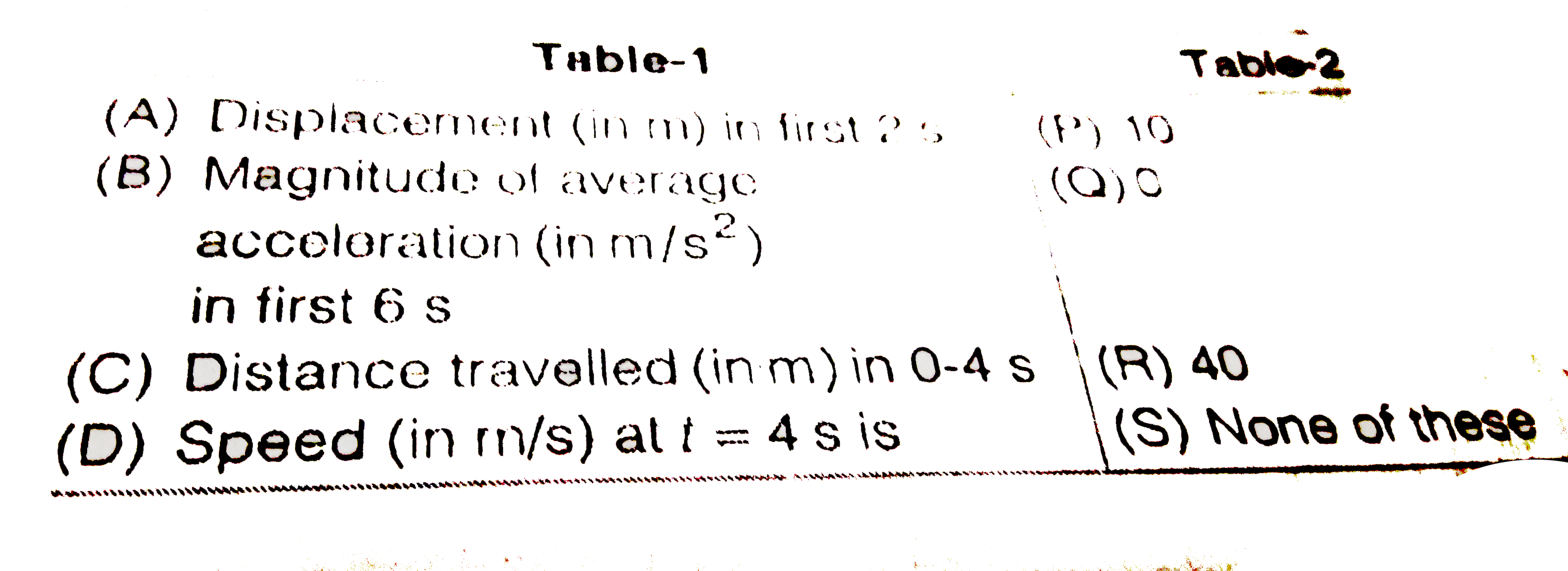 View Solution
View SolutionA ball is projected vertically up with speed 20 m/s. Take g=10m/s2
View SolutionA ball is thrown horizontally from a point O with speed 20 m/s as shown. Ball strikes the incline along normal after two seconds
The value of angle β will be
 View Solution
View SolutionVelocity of flow of water in a horizontal pipe is 10.0 m/s. Find the velocity head of water (g=10m/s2)
View SolutionA ball is thrown horizontally with a speed of 20m/s from the top of a tower of height 100m
velocity with which the ball strikes the ground is .View SolutionA ball is thrown horizontally from a point O with speed 20 m/s as shown. Ball strikes the incline along normal after two seconds
The speed of ball just before striking the plane is:
 View Solution
View SolutionA ball is thrown horizontally from a point O with speed 20 m/s as shown. Ball strikes the incline along normal after two seconds
The displacement of ball in two seconds will be:
 View Solution
View SolutionA uniform rod of length 50 cm is released in the vertical plane from the position shown in the figure. The rod is hinged smoothly at O. The angular speed of rod when it becomes horizontal is ( take g=10ms−2 )
 View Solution
View Solution

